Results 11,741 to 11,750 of 12091
Thread: Anandtech News
-
05-26-23, 11:19 PM #11741
Anandtech: TSMC Details N4X Process for HPC: Extreme Performance at Minimum Leakage
At its 2023 Technology Symposium TSMC revealed some additional details about its upcoming N4X technology that is designed specifically for high-performance computing (HPC) applications. This node promises to enable ultra-high performance and improve efficiency while maintaining IP compatibility with N4P (4 nm-class) process technology.
"N4X truly sets a new benchmark for how we can push extreme performance while minimizing the leakage power penalty," said Yujun Li, TSMC's director of business development who is in charge of the foundry's High Performance Computing Business Division.
TSMC's N4X technology belongs to the company's N5 (5 nm-class) family, but it is enhanced in several ways and is optimized for voltages of 1.2V and higher in overdrive mode.
To achieve higher performance and efficiency, TSMC's N4X improves transistor design in three three key areas. Firstly, they refined their transistors to boost both processing speed and drive currents. Secondly, the foundry incorporated its new high-density metal-insulator-metal (MiM) capacitors, to provide reliable power under high workloads. Lastly, they modified the the back-end-of-line metal stack to provide more power to the transistors.
In particular, N4X adds four new devices on top of the N4P device offerings, including ultra-low-voltage transistors (uLVT) for applications that need to be very efficient, and extremely-low threshold voltage transistors (eLVT) for applications that need to work at high clocks. For example, N4X uLVT with overdrive offers 21% lower power at the same speed when compared to N4P eLVT, whereas N4X eLVT in OD offers 6% higher speed for critical paths when compared to N4P eLVT.
While N4X offers significant performance enhancements compared to N4 and N4P, it continues to use the same SRAM, standard I/O, and other IPs as N4P, which enables chip designers to migrate their designs to N4X easily and cost effectively. Meanwhile, keeping in mind N4X's IP compatibility with N4P, it is logical to expect transistor density of N4X to be more or less in line with that of N4P. Though given the focus of this technology, expect chip designers to use this technology to get extreme performance rather than maximum transistor density and small chip dimensions.Advertised PPA Improvements of New Process Technologies
Data announced during conference calls, events, press briefings and press releasesTSMC N5
vs
N7N5P
vs
N5N5HPC
vs
N5N4
vs
N5N4P
vs
N5N4P
vs
N4N4X
vs
N5N4X
vs
N4PN3
vs
N5Power -30% -10% ? lower -22% - ? ? -25-30% Performance +15% +5% +7% higher +11% +6% +15%
or
more+4%
or more+10-15% Logic Area
Reduction %
(Density)0.55x
-45%
(1.8x)
-
-0.94x
-6%
1.06x0.94x
-6%
1.06x
-
?
?0.58x
-42%
(1.7x)Volume
ManufacturingQ2 2020 2021 Q2 2022 2022 2023 H2 2022 H1
2024?H1 2024? H2 2022
TSMC claims that N4X has achieved its SPICE model performance targets, so customers can start using the technology today for their HPC designs that will enter production sometimes next year.
For TSMC, N4X is an important technology as HPC designs are expected to be the company's main revenue growth driver in the coming years. The contract maker of chips anticipates HPC to account for 40% of its revenue in 2030 followed by smartphones (30%) and automotive (15%) applications.
More...
-
05-29-23, 06:30 PM #11742
Anandtech: Phison Unveils PS5031-E31T SSD Platform For Lower-Power Mainstream PCIe 5
At Computex 2023, Phison is introducing a new, lower-cost SSD controller for building mainstream PCIe 5.0 SSDs. The Phison PS5031-E31T is a quad channel, DRAM-less controller for solid-state drives that is designed to offer sequential read/write speeds up to 10,8 GB/s at drive capacities of up to 8 TB, which is in line with some of the fastest PCIe 5.0 SSDs available today.
The Phison E31T controller is, at a high level, the lower-cost counterpart to Phison's current high-end PCIe 5.0 SSD controller, the E26. The E31T is based around multiple Arm Cortex R5 cores for realtime operations, and in Phison designs these are traditionally accompanied by special-purpose accelerators that belong to the company's CoXProcessor package. The chip supports Phison's 7th Generation LDPC engine with RAID ECC and 4K code word to handle the latest and upcoming 3D TLC and 3D QLC types of 3D NAND. The controller also supports AES256, TCG Opal, and Pyrite encryption.
The SSD controller is organized in four NAND channels with 16 chip enable lines (CEs) in total, allowing it to address 4 NAND dies per channel. For now Phison is refraining from disclosing NAND interface speeds the controller supports, though given the fact that the controller is set to support sequential read/write throughput of 10,800 MB/s over four channels, napkin math indicates they'll need to support transfer rates of at least 2700 MT/s. This is on the upper-end of current ONFi/Toggle standards, but still readily attained. For example, Kioxia's and Western Digital's latest 218-layer BICS 3D NAND devices support a 3200 MT/s interface speed (which provides a peak sequential read/write speed of 400 MB/s).
Phison says that its E31T controller will enable M.2-2280 SSDs with a PCIe 5.0 x4 interface and a capacities of up to 8 TB. Phison's DRAM-less controllers tend to remain in use in SSD designs for quite a while due to their mainstream posiitoning and relatively cheap price, so, unsurprisingly, Phison traditionally opts to plan for the long term with regards to capacity. 8 TB SSDs will eventually come down in price, even if they aren't here quite yet.
Compared to the high-end E26 controller, the E31T supports fewer NAND channels and NAND dies overall, but enthusiasts will also want to take note of the manufacturing process Phison is using for the controller. Phison is scheduled to build the E31T on TSMC's 7nm process, which although is no longer-cutting edge, is a full generation ahead of the 12nm process used for the E26. So combined with the reduced complexity of the controller, this should bode well for cooler running and less power-hungry PCIe 5.0 SSDs.Phison NVMe SSD Controller Comparsion E31T E21T E19T E26 E18 Market Segment Mainstream Consumer High-End Consumer Manufacturing
Process7nm 12nm 28 nm 12nm 12nm CPU Cores 1x Cortex R5 1x Cortex R5 1x Cortex R5 2x Cortex R5 3x Cortex R5 Error Correction 7th Gen LDPC 4th Gen LDPC 5th Gen LDPC 4th Gen LDPC DRAM No No No DDR4, LPDDR4 DDR4 Host Interface PCIe 5.0 x4 PCIe 4.0 x4 PCIe 4.0 x4 PCIe 5.0 x4 PCIe 4.0 x4 NVMe Version NVMe 2.0? NVMe 1.4 NVMe 1.4 NVMe 2.0 NVMe 1.4 NAND Channels, Interface Speed 4 ch,
3200 MT/s?4 ch,
1600 MT/s4 ch,
1400 MT/s8 ch,
2400 MT/s8 ch,
1600 MT/sMax Capacity 8 TB 4 TB 2 TB 8 TB 8 TB Sequential Read 10.8 GB/s 5.0 GB/s 3.7 GB/s 14 GB/s 7.4 GB/s Sequential Write 10.8 GB/s 4.5 GB/s 3.0 GB/s 11.8 GB/s 7.0 GB/s 4KB Random Read IOPS 1500k 780k 440k 1500k 1000k 4KB Random Write IOPS 1500k 800k 630k 2000k 1000k
The smaller, mainstream-focused chip should also allow for those PCIe 5.0 SSDs to be cheaper. Though, as always, it should be noted that Phison doesn't publicly talk about controller pricing, let alone control what their customers (SSD vendors) charge for their finished drives.
As for availability of drives based on Phison's new controller, as Phison has not yet announced an expected sampling date, you shouldn't expect to see E31T drives for a while. Phison typically announces new controllers fairly early in the SSD development process, so there's typically at least a several month gap before finished SSDs hit the market. As Phison's second PCIe 5.0 controller, the E31T should hopefully encounter fewer teething issues than the initial E26, but we'd still expect E31T drives to be 2024 products.
More...
-
05-29-23, 06:30 PM #11743
Anandtech: Intel Discloses New Details On Meteor Lake VPU Block, Lays Out Vision For
While the first systems based on Intel’s forthcoming Meteor Lake (14th Gen Core) systems are still at least a few months out – and thus just a bit too far out to show off at Computex – Intel is already laying the groundwork for Meteor Lake’s forthcoming launch. For this year’s show, in what’s very quickly become an AI-centric event, Intel is using Computex to lay out their vision of client-side AI inference for the next generation of systems. This includes both some new disclosures about the AI processing hardware that will be in intel’s Meteor Lake hardware, as well as what Intel expects OSes and software developers are going to do with the new capabilities.
AI, of course, has quickly become the operative buzzword of the technology industry over the last several months, especially following the public introduction of ChatGPT and the explosion of interest in what’s now being termed “Generative AI”. So like the early adoption stages of other major new compute technologies, hardware and software vendors alike are still in the process of figuring out what can be done with this new technology, and what are the best hardware designs to power it. And behind all of that… let’s just say there’s a lot of potential revenue waiting in the wings for those companies that succeed in this new AI race.
Intel for its part is no stranger to AI hardware, though it’s certainly not a field that normally receives top billing at a company best known for its CPUs and fabs (and in that order). Intel’s stable of wholly-owned subsidiaries in this space includes Movidius, who makes low power vision processing units (VPUs), and Habana Labs, responsible for the Gaudi family of high-end deep learning accelerators. But even within Intel’s rank-and-file client products, the company has been including some very basic, ultra-low-power AI-adjacent hardware in the form of their Gaussian & Neural Accelerator (DNA) block for audio processing, which has been in the Core family since the Ice Lake architecture.
Still, in 2023 the winds are clearly blowing in the direction of adding even more AI hardware at every level, from the client to the server. So for Computex Intel is disclosing a bit more on their AI efforts for Meteor Lake.
More...
-
05-31-23, 02:05 AM #11744
Anandtech: Asus Details ROG Matrix GeForce RTX 4090: Liquid Cooling Meets Liquid Meta
Asus has introduced a new flagship RTX 4090 graphics card that uses an all-in-one liquid cooling system combined with liquid metal thermal interface. Dubbed the ROG Matrix GeForce RTX 4090, Asus says that its advanced cooler combined with extremely efficient thermal interface will ensure the maximum boost clocks possible, with Asus taking clear aim of producing the fastest gaming graphics card on the market.
Proper power delivery and efficient cooling are main ways to enable consistently high CPU and GPU performance these days, so when designing its ROG Matrix GeForce RTX 4090, the company used its own proprietary printed circuit board (PCB) with an advanced voltage regulating module (VRM). Meanwhile cooling is being provided by an all-in-one liquid cooling system that removes heat not only from GPU, but also from memory and VRM, exhausting that heat via the attached "extra-thick" 360mm radiator.
But Asus says that its ROG Matrix GeForce RTX 4090 has a secret ingredient that its rivals lack: liquid metal thermal interface material (TIM) that ensures superior heat transfer from hot components to cooling systems.
Asus does not disclose what type of liquid metal TIM it uses for graphics cards (it uses ThermalGrizzly's Conductonaut Extreme for some laptops), bus usually such thermal interfaces are made from gallium or gallium alloys, which are liquid at or near room temperature and are great conductors of heat.
But there are also some risks and challenges associated with using liquid metal thermal interfaces. Firstly, they are electrically conductive, which means that if the material spills or is not properly contained, it could cause a short circuit. Secondly, these materials can be corrosive to certain metals like aluminum. Thirdly, applying liquid metal can be more complicated than using other types of thermal paste, requiring careful handling and precision.
Asus says that it has been using liquid metal TIMs in its laptops for years, so using them for graphics cards does not seem to be a big challenge for the company.
Asus is not disclosing the complete specifications of the ROG Matrix GeForce RTX 4090 for the moment, but it certainly hopes to make the graphics card the world's fastest. It remains to be seen whether the product will indeed be the fastest out-of-box, but it will certainly offer a noteworthy overclocking potential when compared to regular GeForce RTX 4090 graphics boards with regular coolers.
The Asus ROG Matrix GeForce RTX 4090 will be a limited-edition card available for sale in Q3.
More...
-
05-31-23, 02:05 AM #11745
Anandtech: Corsair Unveils Dominator Titanium DDR5 Kits: Reaching For DDR5-8000
Corsair has introduced its new Dominator Titanium series of DDR5 memory modules that will combine performance, capacity, and style. The new lineup of memory modules and kits will offer DRAM kits up to 192 GB in capacity at data transfer rates as high as DDR5-8000.
The Dominator Titanium DIMMs are based on cherry-picked memory chips and Corsair's own printed circuit boards to ensure signal quality and integrity. Also, these PCBs are supplemented with internal cooling planes and external thermal pads that transfer heat to aluminum heat spreaders, with an aim on keeping the heavily overclocked DRAM sufficiently cooled.
With regards to performance, the retail versions of the Titanium kits will run at speeds ranging from DDR5-6000 to DDR5-8000. Which, at the moment, would make the top-end SKUs of the highest clocked DDR5 RAM on the market. Corsair is also promissing kits with CAS latencies as low as CL30, though absent a full product matrix, it's likely those kits will be clocked lower. The DIMMs come equipped with AMD's EXPO (AMD version) and Intel's XMP 3.0 (Intel version) SPD profiles for easier overclocking.
As for capacity, the Titanium DIMMs will be available in 16GB, 24GB, 32GB, and 48GB configurations, allowing for kits ranging from 32GB (2 x 16GB) up to 192GB (4x 48GB). Following the usual rule curve for DDR5 memory kits, we'll wager that DDR5-8000 kits won't be avaialble in 192GB capacities – even Intel's DDR5 memory controller has a very hard time with running 4 DIMMs anywhere near that fast – so we're expecting that the fastest kits will be limited to smaller capacities; likely 48GB (2 x 24GB).
Corsair is not disclosing whose memory chips it uses for its Dominator Titanium memory modules, but there is a good chance that it uses Micron's latest generation of DDR5 chips, which are available in both 16Gbit and 24Gbit capacities. Micron was the first DRAM vendor to publicly start shipping 24Gbit DRAM chips, so they are the most likely candidate for the first 24GB/48GB DIMMs such as Corsair's. And if that's the case, that would mark an interesting turn-around for Micron; the company's first-generation DDR5 modules are not known for overclocking very well, which is why we haven't been seeing them on current high-end DDR5 kits.
Corsair has also taken into account aesthetic preferences by incorporating 11 addressable Capellix RGB LEDs into the modules. Users can customize and control these LEDs using Corsair's iCue software. For those favoring minimalism, Corsair offers separate Fin Accessory Kits. These kits replace the RGB top bars with fins, bringing a classic look reminiscent of the original Dominator memory.
While Corsair's new Dominator Titanium memory modules are already very fast, to commemorate their debut Corsair plans to release a limited run of First-Edition kits. These exclusive kits will feature even higher clocks and tighter timings – likely running at DDR5-8266 speeds, which Corsair is showing off at Computex. Corsair intends to offer only 500 individually numbered First-Edition kits.
Corsair plans to start selling its Dominator Titanium kits in July. Pricing will depend on market conditions, but expect these DIMMs to carry a premium price tags.
Gallery: Corsair Unveils Dominator Titanium: Up to 192GB DDR5-8000 Kits


More...
-
05-31-23, 11:37 AM #11746
Anandtech: MSI Intros USB4 PCIe Expansion Card with 100W Power Delivery
For Computex 2023, MSI is introducing an interesting USB4 PCIe expansion card. The card not only offers two full-bandwidth USB4 40Gbps Type-C ports, but the card can also deliver up to 100W of power to a device connected to it, allowing it to be used to power high-drain devices like laptops.
The MSI USB4 PD100W Expansion Card (MS-4489) has two DisplayPort inputs as well as two USB Type-C connectors. The Type-C ports support USB data rates up to40 Gbps, but also supports DP alt mode and USB power delivery.
What really makes this card notable are those power delivery capabilities; most USB4/Thunderbolt 4 expansion cards are PCIe bus-powered, and can only deliver up to 15 Watts or so. MSI's card, on the other hand, can deliver up to 100 Watts of power on its best Type-C port, which is enough power for charging a high-performance notebook or powering something demanding (e.g., a display). Meanwhile the card's second Type-C port can deliver up to 27 Watts, which is enough for smartphones and other mid-power periphreals.
The card uses a physical PCIe x8 form factor, with what looks to be an electrical x4 interface. For now MSI does not disclose which version of the PCIe protocol it supports – or for that matter whose USB4 controller they're using. PCIe 3.0 x4 is sufficient to fully drive a 40Gbps port; but it's rare for any external USB controller to be able to drive two 40Gbps ports at full bandwidth at once.
Menawhile, as this USB4 host card goes above and beyond the amount of power a PCIe slot can provide, the card also has a six-pin auxiliary PCIe connector to supply the remaining power. Per the PCIe specificaiton, a x4 card can draw up to 25W from the slot, so the 75W auxillery connector brings the card to its 100W limit. Though this also means that if MSI is sticking to the PCIe spec, then they can't deliver a full 100W + 27W at the same time.
MSI's USB4 PD100W Expansion Card is mainly aimed at users who need to attach bandwidth demanding peripherals (such as direct attached storage or some professional equipment) and USB-C displays to their desktop PCs. The board will serve equally well both the latest PCs that do not support USB4 connectors (or need extra Type-C ports) and machines that are already is use and need to gain advanced connectivity.
MSI does not disclose pricing of its USB4 expansion card or when it is set to be available, though we would expect it to be priced competitively against similar Thunderbolt 3/4 expansion cards that have been available for some time.
More...
-
06-01-23, 03:46 AM #11747
Anandtech: TSMC Shares More Info on 2nm: New MIM Capacitor and Backside PDN Detailed
TSMC has revealed some additional details about its upcoming N2 and N2P process technology at its European Technology Symposium 2023. Both production nodes are being developed with high-performance computing (HPC) in mind, so, they feature a number of enhancements designed specifically to improve performance. Meanwhile, given the performance-efficiency focus that most chips aim to improve upon, low-power applications will also take advantage of TSMC's N2 nodes as they will naturally improve performance-per-watt compared to predecessors.
"N2 is a great fit for the energy efficient computing paradigm that we are in today," said Yujun Li, TSMC's director of business development who is in charge of the foundry's High Performance Computing Business Division, at the company's European Technology Symposium 2023. "The speed and power advantages of N2 over N3 over the entire voltage supply ranges as shown is very consistent, making it suitable for both low-power and high-performance applications at the same time."
TSMC's N2 manufacturing node — the foundry's first production nodes to use nanosheet gate-all-around (GAAFET) transistors — promises to increase transistor performance by 10-15% at the same power and complexity, or lower power usage by 25-30% at the same clock speed and transistor count. Power delivery is one of the corner stones when it comes to improving transistor performance and TSMC's N2 and N2P manufacturing processes introduce several interconnects-related innovations to squeeze some additional performance. Furthermore, N2P brings in backside power rail to optimize power delivery and die area.
Fighting Resistance
One of the innovations that N2 brings to the table is super-high-performance metal-insulator-metal (SHPMIM) capacitor to enhance power supply stability and facilitate on-chip decoupling. TSMC says that the new SHPMIM capacitor offers over 2X higher capacity density compared to its super-high-density metal-insulator-metal (SHDMIM) capacitor introduced several years ago for HPC (which increased capacitance by 4X when compared to previous-generation HDMIM). The new SHPMIM also reduces Rs sheet resistance (Ohm/square) by 50% compared to SHDMIM as well as Rc via resistance by 50% compared to SHDMIM.
Yet another way to reduce resistance in the power delivery network has been to rearchitect the redistribution layer (RDL). Starting from its N2 process technology, TSMC will use a copper RDL instead of today's aluminum RDL. A copper RDL will provide a similar RDL pitch, but will reduce sheet resistance by 30% as well as cut down via resistance by 60%.
Both SHPMIM and Cu RDL are parts of TSMC's N2 technology that is projected to be used for high volume manufacturing (HVM) in the second half 2025 (presumably very late in 2025).
Decoupling Power and I/O Wiring
The use of a backside power delivery network (PDN) is a yet another major improvement that will be featured by N2P. General advantages of backside power rail are well known: by separating I/O and power wiring by moving power rails to the back, it is possible to make power wires thicker and therefore reduce via resistances in the back-end-of-line (BEOL), which promises to improve performance and cut down power consumption. Also, decoupling I/O and power wires allows to shrink logic area, which means lower costs.
At its Technology Symposium 2023 the company revealed that backside PDN of its N2P will enable 10% to 12% higher performance by reducing IR droop and improving signaling, as well as reducing the logic area by 10% to 15%. Now, of course, such advantages will be more obvious in high-performance CPUs and GPUs that have dense power delivery network and therefore moving it to the back makes a great sense for them.
Backside PDN is a part of TSMC's N2P fabrication technology that will enter HVM in late 2026 or early 2027.
More...
-
06-01-23, 09:02 PM #11748
Anandtech: Biostar Joins Intel Arc Camp, Preps Arc Video Cards
Without much fanfare, Biostar has introduced its first graphics card based on Intel Arc graphics processors. The add-in-board is aimed at entry-level gaming PCs, and is admittedly not very remarkable itself. But the fact that Intel has a new AIB partner, and that Biostar now has graphics cards powered by GPUs from all three major vendors, are important developments for the wider industry.
The Biostar Intel Arc A380 graphics card demonstrated at Computex 2023 is based on the ACM-G11 processor and features a minimalistic design with a rather simplistic single-fan cooler. The AIB does not need any auxiliary PCIe power connectors and will fit into the vast majority of desktops that are new or already in use (including Mini-ITX one), so it can be used both for new PCs and for upgrades. It is unclear whether Biostar plans to offer these products worldwide.
Biostar ?? Intel Arc#Computex23 pic.twitter.com/wpJ1jBg4ZsThe board first appeared in a Biostar video posted on May 31, 2023, and then was spotted at the company's Computex booth by a WCCFTech editor Hassan Mujtaba.
— Hassan Mujtaba (@hms1193) May 31, 2023
While Intel is one of the world's most recognized brands, its modern entry into the discrete GPU game has not been met with a lot of enthusiasm from the top video card manufacturers. As of today, Intel has a number of partners building AIBs powered by its standalone graphics processors, including ASRock, Acer, Gigabyte, Gunnir, MSI, and Sparkle. The addition of Biostar in this case seems like an important event for Intel's GPU business, especially in going after the entry-level segment of the market.
Speaking of Biostar, it is noteworthy that while the company has introduced its Radeon RX 7900-series and Radeon RX 7600-series graphics cards, it yet has to offer any new products based on NVIDIA's GeForce RTX 40-series GPUs. In fact, it is unclear whether the company has plans for any of these at all and its presence at Computex has not shed any light on its intentions.
More...
-
06-01-23, 09:02 PM #11749
Anandtech: ASRock Showcases Two New Intel Z790 Motherboards With Wi-Fi 7 at Computex
With the Wi-Fi 7 (IEEE 802.11be) train set to roll into the mainstream later this year, ASRock looks to be getting ahead of the curve with two new Z790 motherboards featuring the latest Wi-Fi 7 CNVI's. The more premium of the pairing, the ASRock Phantom Gaming Z790 Nova WiFi7 combines Wi-Fi 7 connectivity with several notable features, including a large power delivery, one PCIe 5.0 x4 M.2 slot, as well as 5 GbE and support for up to two USB 3.2 G2x2 ports. The ASRock Phantom Gaming Z790 Riptide WiFi7 has a more modest feature set but plenty of premium connectivity, including 5 GbE and Wi-Fi 7, with eight SATA ports and space for up to five M.2 drives.
As more and more companies in the networking space announce their Wi-Fi 7 offerings, such as the Netgear Nighthawk RS700 Wi-Fi 7 router, unveiled back in March, it wouldn't take motherboard vendors long to follow suit. ASRock is seemingly one of the first, if not the first, to introduce not one but two motherboards based on Intel's Z790 chipset designed for the 13th Gen Core series family with Wi-Fi 7 connectivity.
Although ASRock hasn't provided a detailed list of specifications, they are showcasing both motherboards at their Computex 2023 booth. The ASRock Phantom Gaming Z790 Nova WiFi7 is the more premium of the two, with an advertised 20+1+1 power delivery, with one PCIe 5.0 x4 M.2 slot, as well as support for up to five additional PCIe 4.0 x4 M.2 slots. On the rear are seven USB ports, including one rear panel USB 3.2 G2x2 Type-C port, with a front panel header providing a second. As well as an unspecified Wi-Fi 7 CNVi, the Z790 Nova WiFi7 includes a single 5 GbE controller.
Moving onto the second of ASRock's Wi-Fi 7-supported motherboards, the ASRock Phantom Gaming Z790 Riptide has a more modestly advertised 16+1+1 power delivery, but that's still more than enough for any users planning to overclock their unlocked Intel 13th Gen Core series processors. As with the Z790 Nova WiFi7, the Z790 Riptide WiFi7 has a single PCIe 5.0 x4 M.2 slot, with support for a further four PCIe 4.0 x4 M.2 SSDs and also has eight SATA ports. ASRock is advertising ten USB ports on the rear panel, with seven additional ports made available via front panel headers, including one USB 3.2 G2x2 port. Networking support comprises an unspecified Realtek 5 GbE controller and a Wi-Fi 7 CNVi.
According to our colleagues at Toms Hardware, ASRock states that both the Phantom Gaming Z790 Nova and Riptide WiFi7 motherboards will launch in August. At the moment, there's no indication of pricing.
Source: Toms Hardware
More...
-
06-02-23, 11:26 PM #11750
Anandtech: TeamGroup Announces T-Force Xtreem ARGB DDR5 Memory: Up to DDR5-8266
At Computex 2023, TeamGroup unveiled two additions to its extensive family of memory products. Available with ARGB heatsinks or subtle black non-RGB heatsinks, the TeamGroup T-Force Xtreem DDR5 memory promises high performance for memory overclockers and gamers.
Looking to rival the high-speed DDR5 kits from companies such as G.Skill, the T-Force Xtreem DDR5 memory is available up to DDR5-8266, with overclocked XMP 3.0 profiles designed to be used with Intel's 13th Gen Core series processors. Regarding the competition, the T-Force Xtreme DDR5-8266 will be one of, if not the fastest, fastest kit available at retail upon its launch, as G.Skill has a kit of their Trident Z5 DDR5-8000 at retail.
The most glamorous looking of the two kits is the T-Force Xtreem ARGB DDR5 memory, with dual light pipes that sit between black translucent acrylic panels. Underneath the acrylic is a 2 mm thick aluminum alloy heatsink which has been anodized black. Between the memory ICs and the heatsink, TeamGroup claims they use a 'highly thermally conductive silicone gel' to provide optimal heat dissipation.
Despite TeamGroup not disclosing the height of the DRAM modules, they look pretty tall, so they might not be compatible with all air coolers, especially those large dual/triple designs. TeamGroup claims that the heat spreaders themselves have a texture similar to black sea sand, although the feel of memory is less important than other things, such as style and actual performance.
The second kit has the same overall shape and design as the ARGB variant but without the actual ARGB LED lighting. This gives the T-Force Xtreem DDR5 modules a classier look with a subtle matte black color scheme throughout, while one side of the heat spreader has a T-Force logo badge which reminds me of something Star Trek characters have on their uniforms.
Due to the speed of these kits, the T-Force Xtreem kits are primarily for Intel's current 13th Gen Core series processors, as AMD's Ryzen 7000 series just cannot hit the memory speeds that Intel's 13th Gen chips can. The TeamGroup T-Force Xtreem ARGB DDR5 and T-Force Xtreem DDR5 kits will come in kits ranging between DDR5-7000 and a blazingly fast DDR5-8266 kit.
As it stands, TeamGroup hasn't unveiled its expected pricing for the T-Force Xtreem ARGB and non-ARGB DDR5 memory kits, nor has it provided what memory ICs they are using or the latency timings. These are expected to be unveiled closer to their launch, which at the moment is unknown.
More...
Thread Information
Users Browsing this Thread
There are currently 13 users browsing this thread. (0 members and 13 guests)





 Quote
Quote
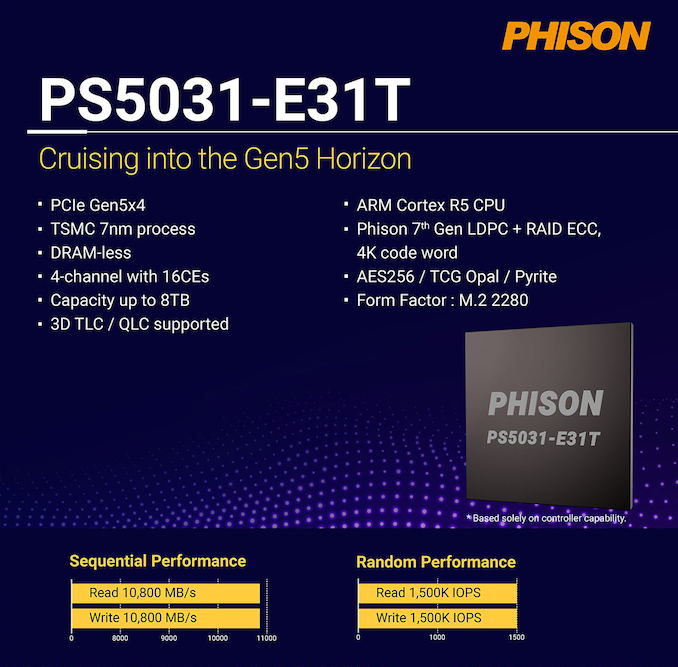
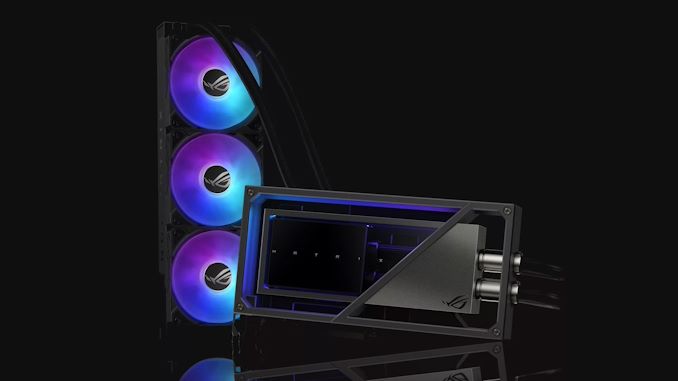
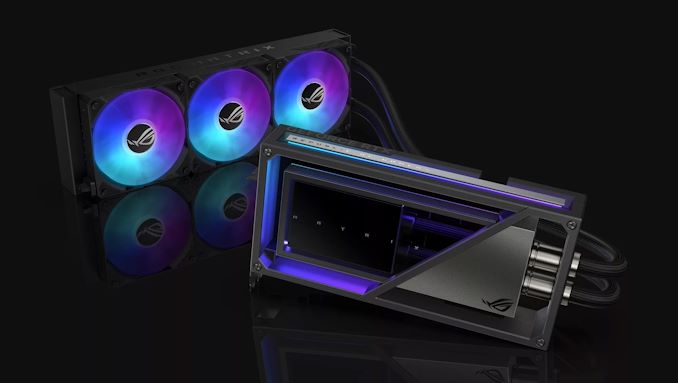
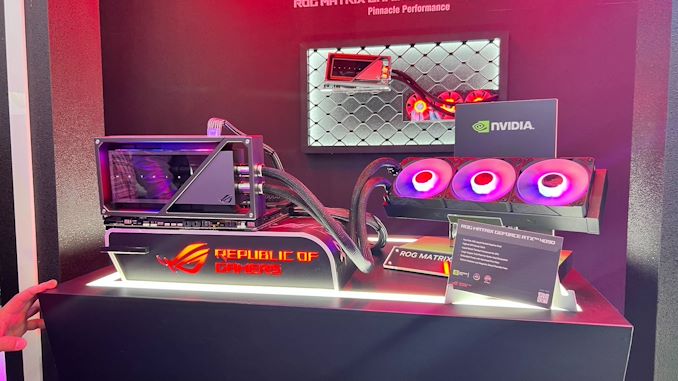
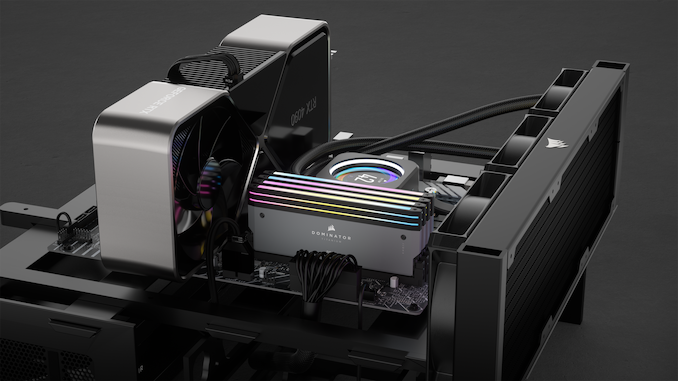

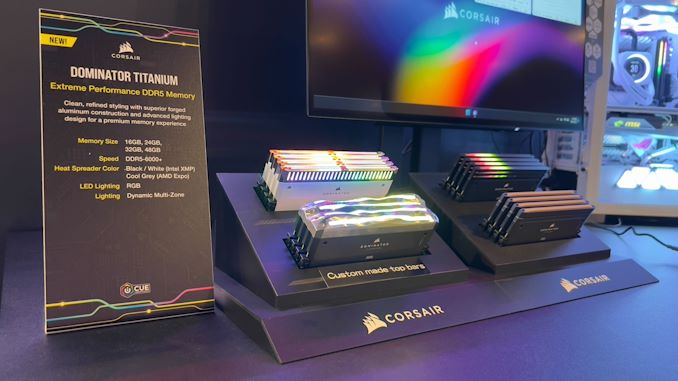
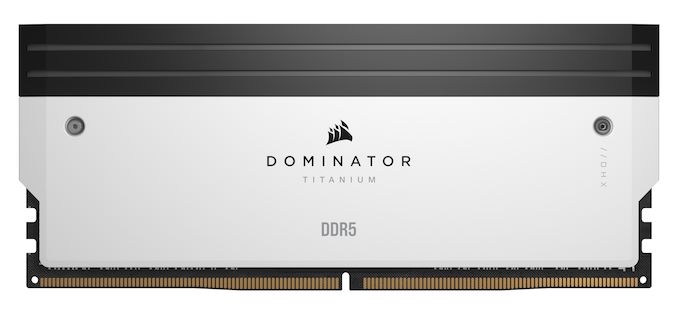
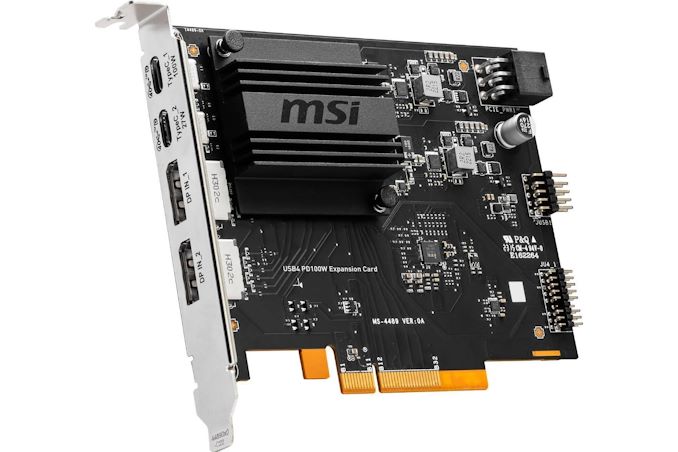
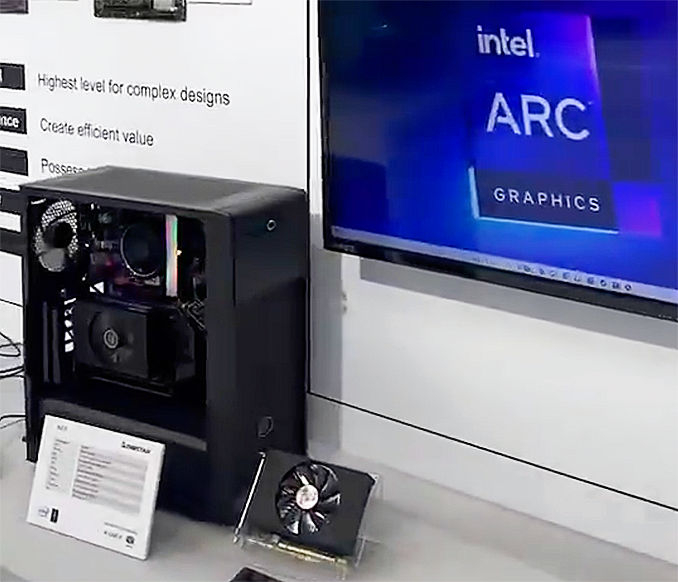
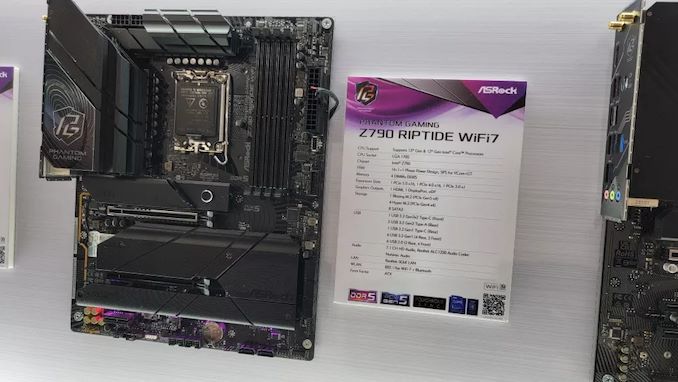
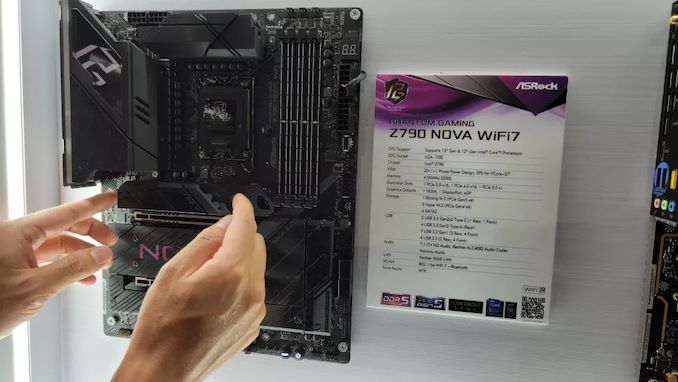
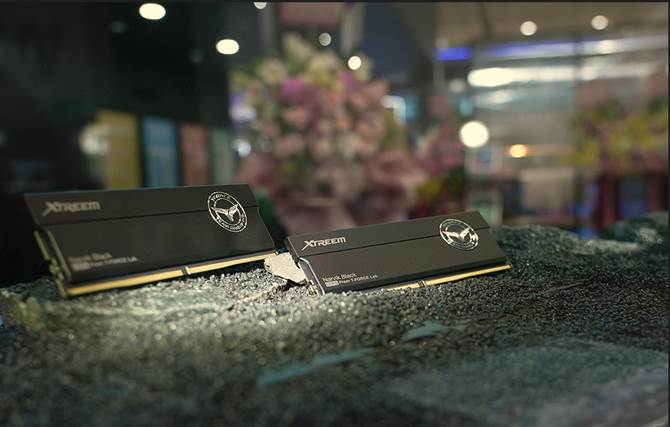


















Bookmarks